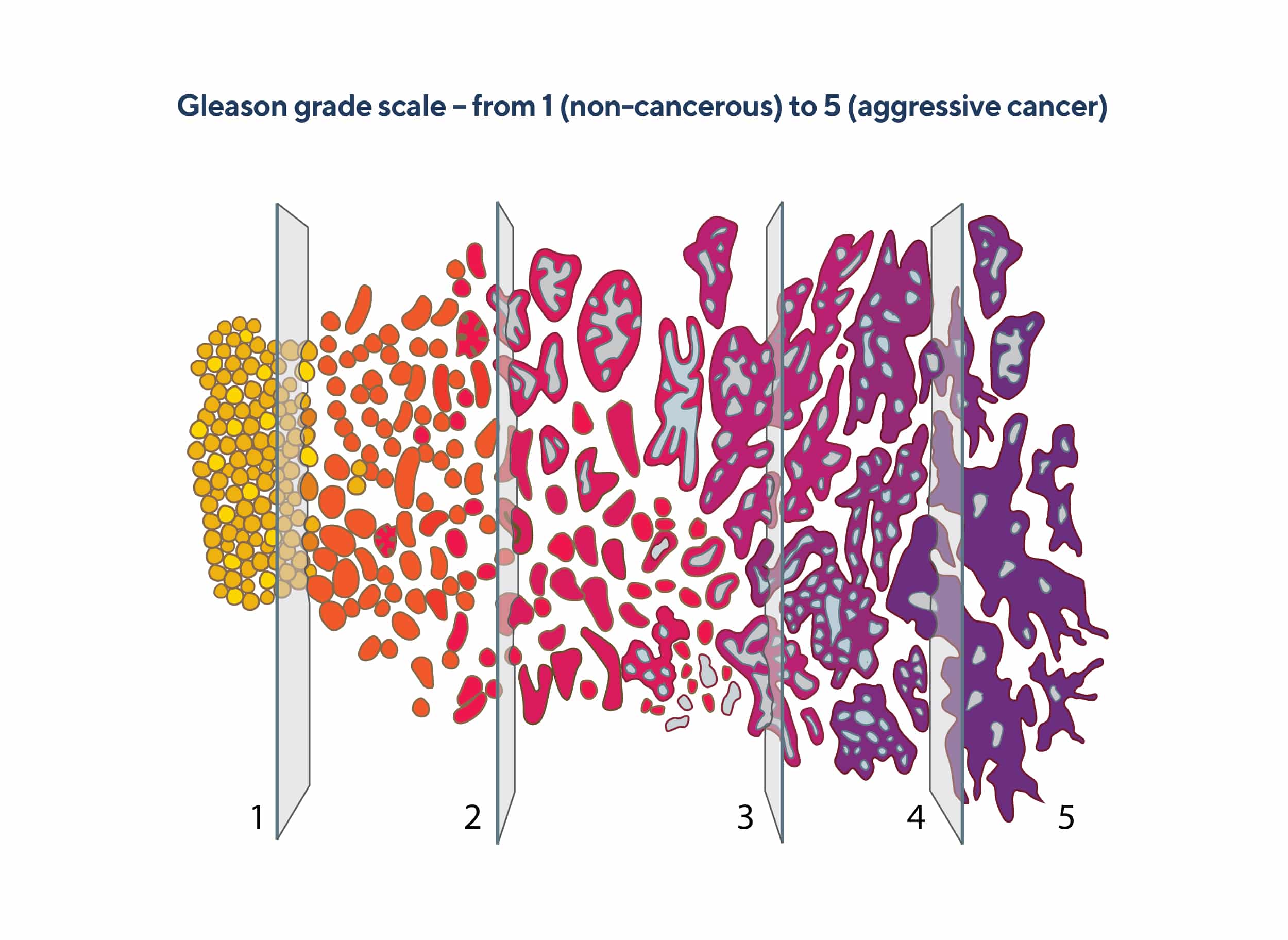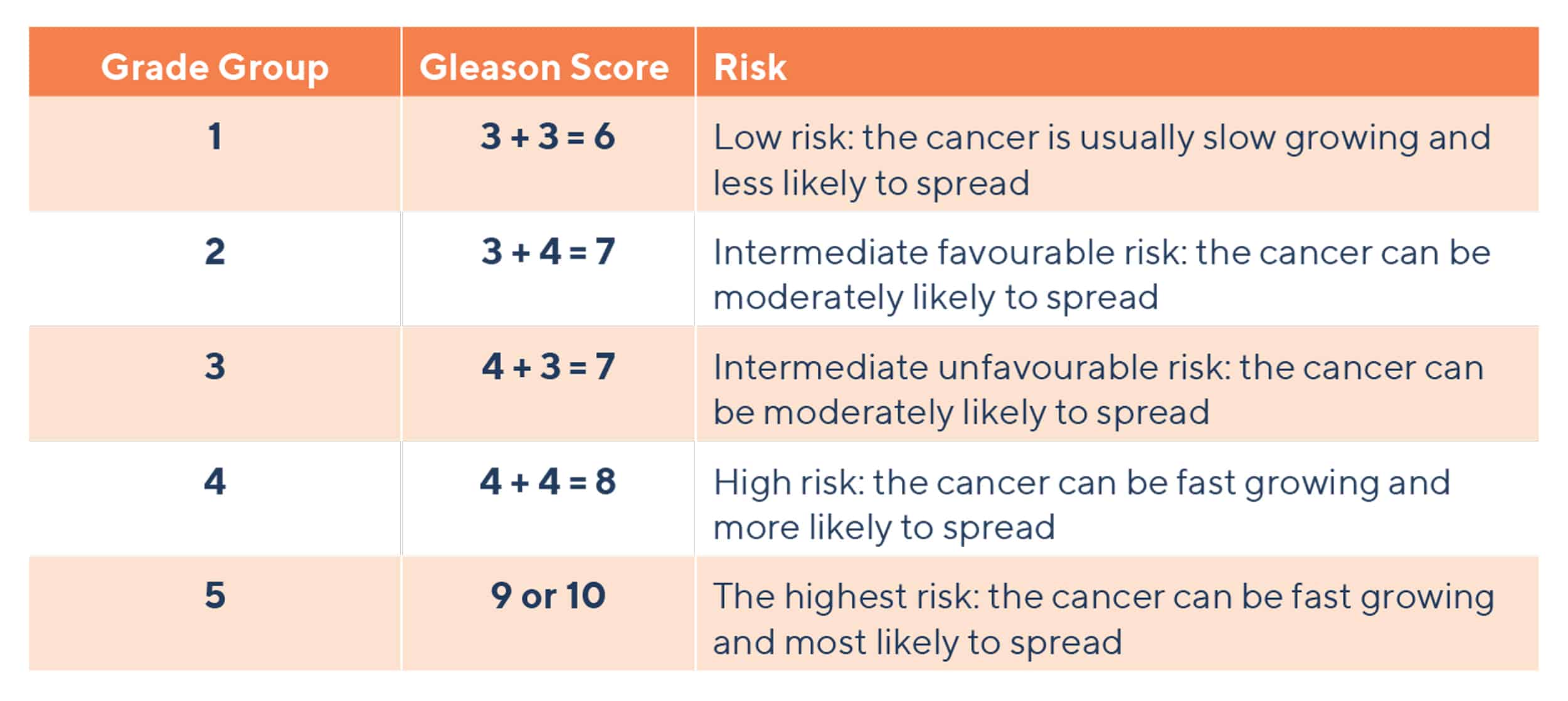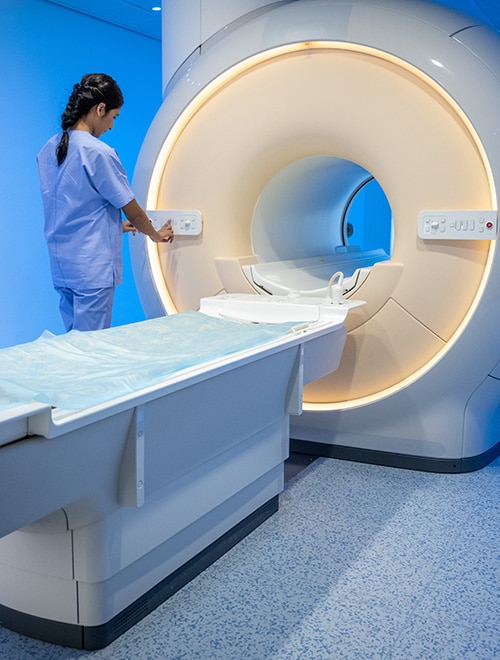- 3 min read
Prostate cancer grade – what does grading mean?
A biopsy diagnoses prostate cancer and provides information for the pathologist to grade any cancer found. Cancer grade means how aggressive your cancer is – how likely the cancer will grow quickly and spread.
Along with your prostate cancer stage (cancer size and whether your cancer has spread beyond your prostate), grading is used to help your doctor determine your risk level and guide treatment options. Knowing how aggressive your cancer is will help you and your doctor decide which treatment is best for you.
How is prostate cancer graded?
A biopsy is a medical procedure where small tissue samples of your prostate are taken and viewed under a microscope by a pathologist. Normal prostate tissue grows in an ordered pattern, but cancer tissue grows in an uncontrolled, unpredictable pattern. Comparing abnormal tissue with normal tissue, the pathologist will look for patterns and use one or two methods to grade your cancer.
- The Gleason system
- ISUP Grade
The Gleason system
The Gleason system uses a numbered score (1–5) for the different patterns of cells that the pathologist identifies in your biopsy tissue samples. However, the 1 and 2 scores are rarely used anymore, so the lowest Gleason score pattern is 3.
As there is often more than one pattern of cancer cells present in the biopsy, the two most common patterns are each scored with a number (3–5), which is then added together to give your final Gleason score.

Low grade cancers usually grow slowly and are unlikely to spread. Higher grade cancers are more aggressive, can grow more quickly and may spread to other parts of your body.
For example, if the first and second most common patterns in your prostate biopsy are scored 3, then your Gleason score will be 3 + 3 = 6. If the first most common pattern is 3 and the second most common pattern is 4 your Gleason score will be 3 + 4 = 7.
The higher your score, the higher your cancer grade and the higher the risk of your cancer growing and spreading quickly.
The ISUP Grade
The ISUP (International Society of Urological Pathology) Grade is a newer, easier to understand and more accurate system at predicting how quickly your cancer might spread. It is done using prostate biopsy samples.
The ISUP Grade uses a 1 to 5 grade group system. The higher the grade group, the higher the risk of your cancer being aggressive and spreading rapidly.
The table below shows the Gleason score and the corresponding ISUP Grade Group.

What happens after you find out the grade of your cancer?
Your cancer grade, along with your prostate cancer stage, PSA test results, personal circumstances and overall health and wellbeing, helps you and your doctor to decide on the best course of treatment for you.
If there is a low risk your cancer will cause you harm, your doctor may recommend active surveillance. This involves regular checks for any changes to your cancer. If your cancer is higher risk, your doctor will talk to you about active treatment options like surgery or radiation therapy. If your cancer is more advanced and has spread elsewhere in your body your doctor may talk to you about other treatments such as chemotherapy or hormone therapy.
The cancer experience is very different for everyone even with the same type of cancer. If you need support, advice or information, talk to your doctor or reach out to a PCFA nurse. They can also connect you with prostate cancer support groups, other medical or allied healthcare professionals and resources for you and your family and friends.
Key points
- Biopsy tissue samples are analysed to diagnose and grade prostate cancer
- Grading means how quickly your prostate cancer is likely to grow and spread
- There are two systems for grading prostate cancer – the Gleason system and the ISUP Grade
- The Gleason system uses a combined score of between 6 and 10, depending on the cell patterns in your biopsy tissue samples
- The newer and more accurate ISUP Grade groups are numbered 1 to 5 and describes the risk of the cancer growing and spreading
- The higher your Gleason score or your ISUP Grade group the higher the risk that your cancer will be fast growing and likely to spread
- Grading, along with staging and other tests, helps guide your treatment and disease outcome discussions






